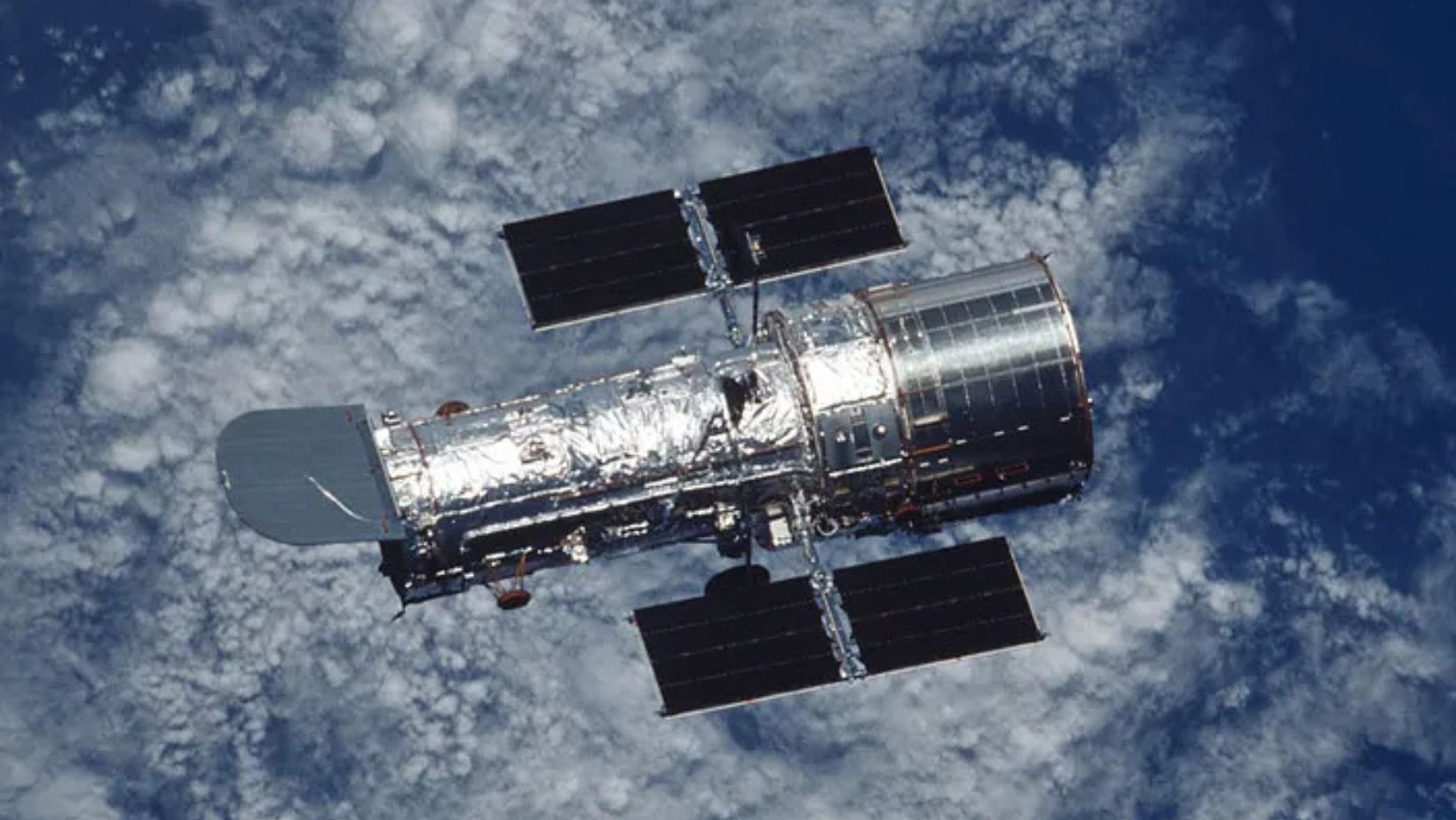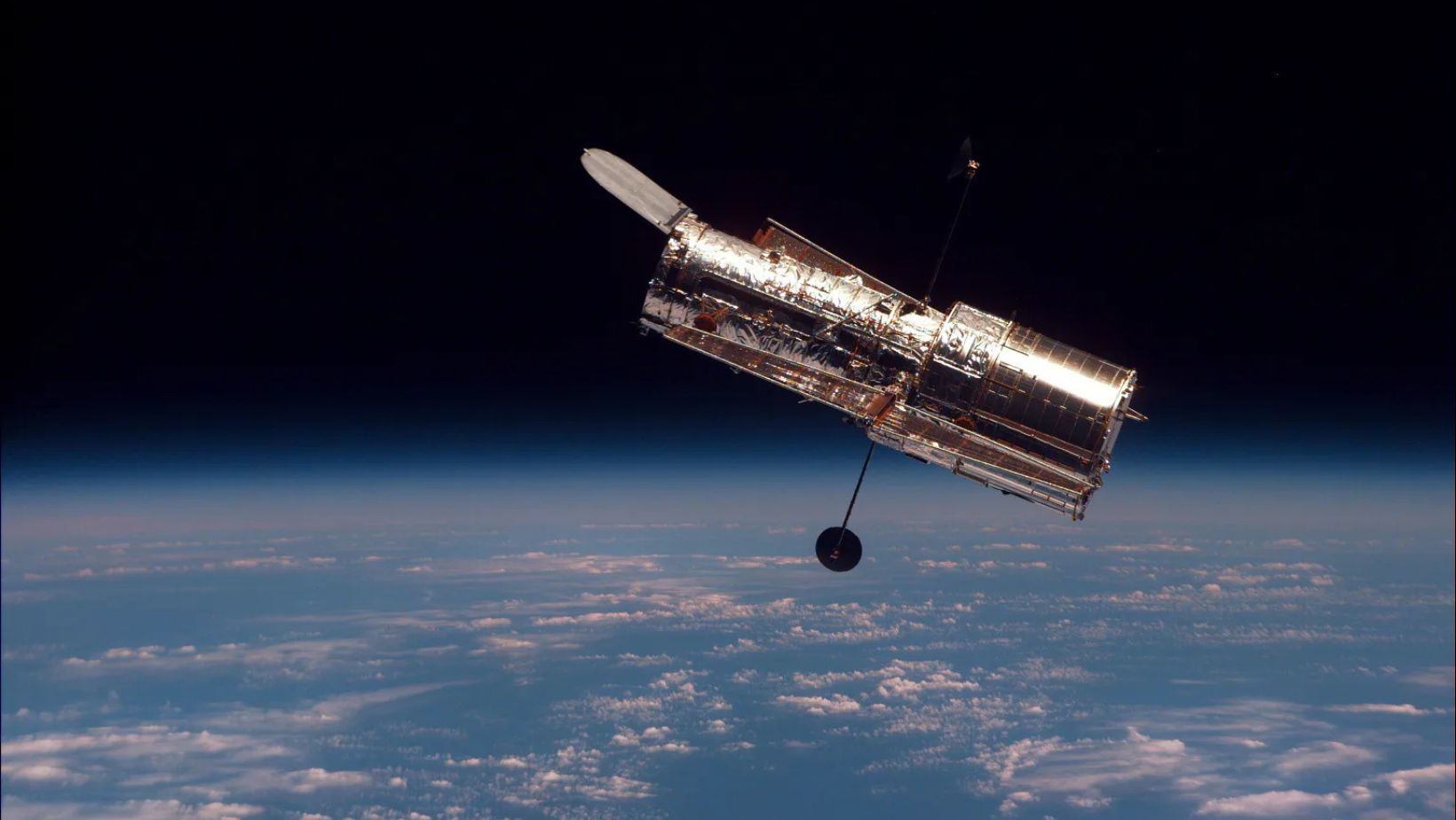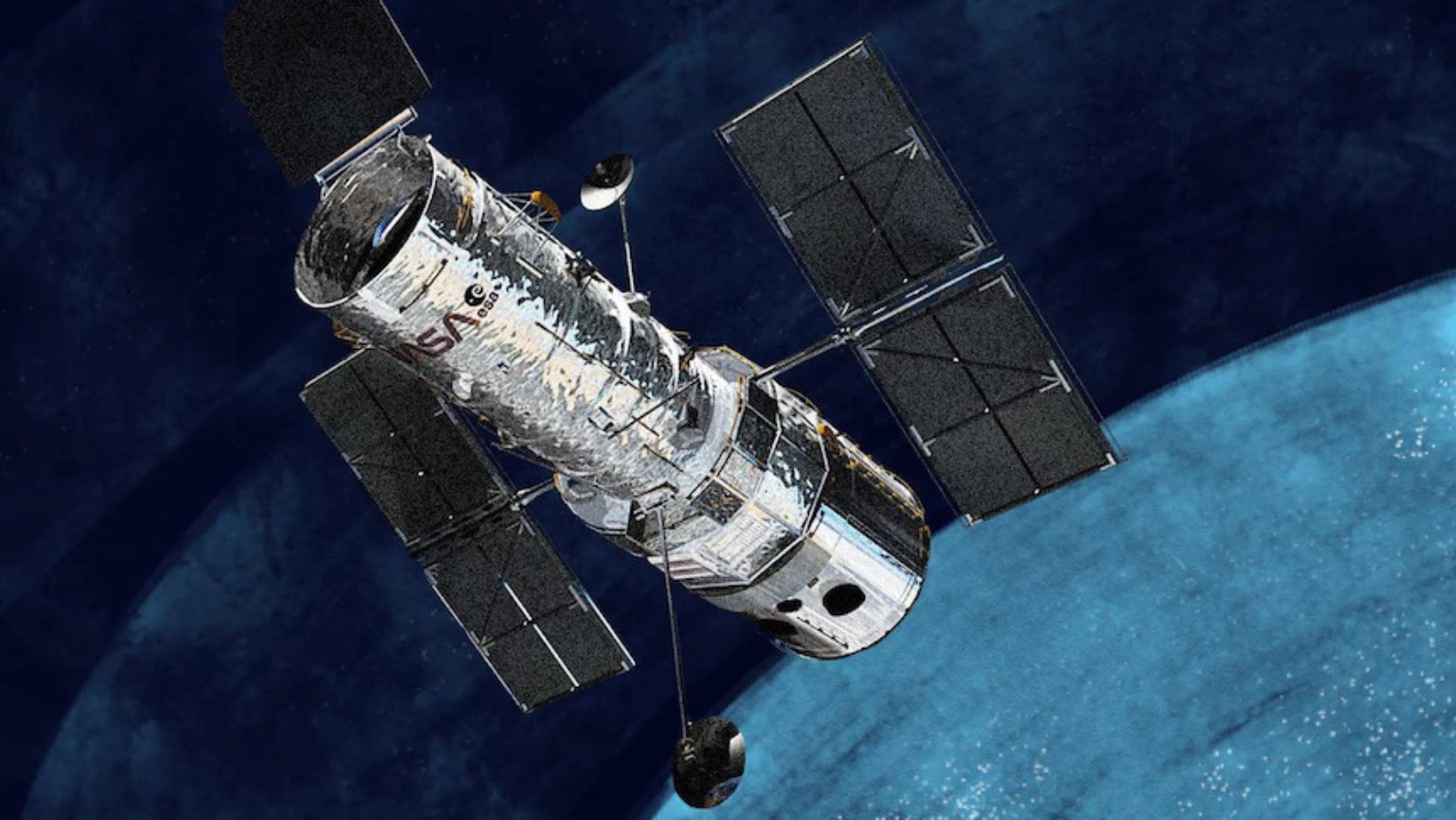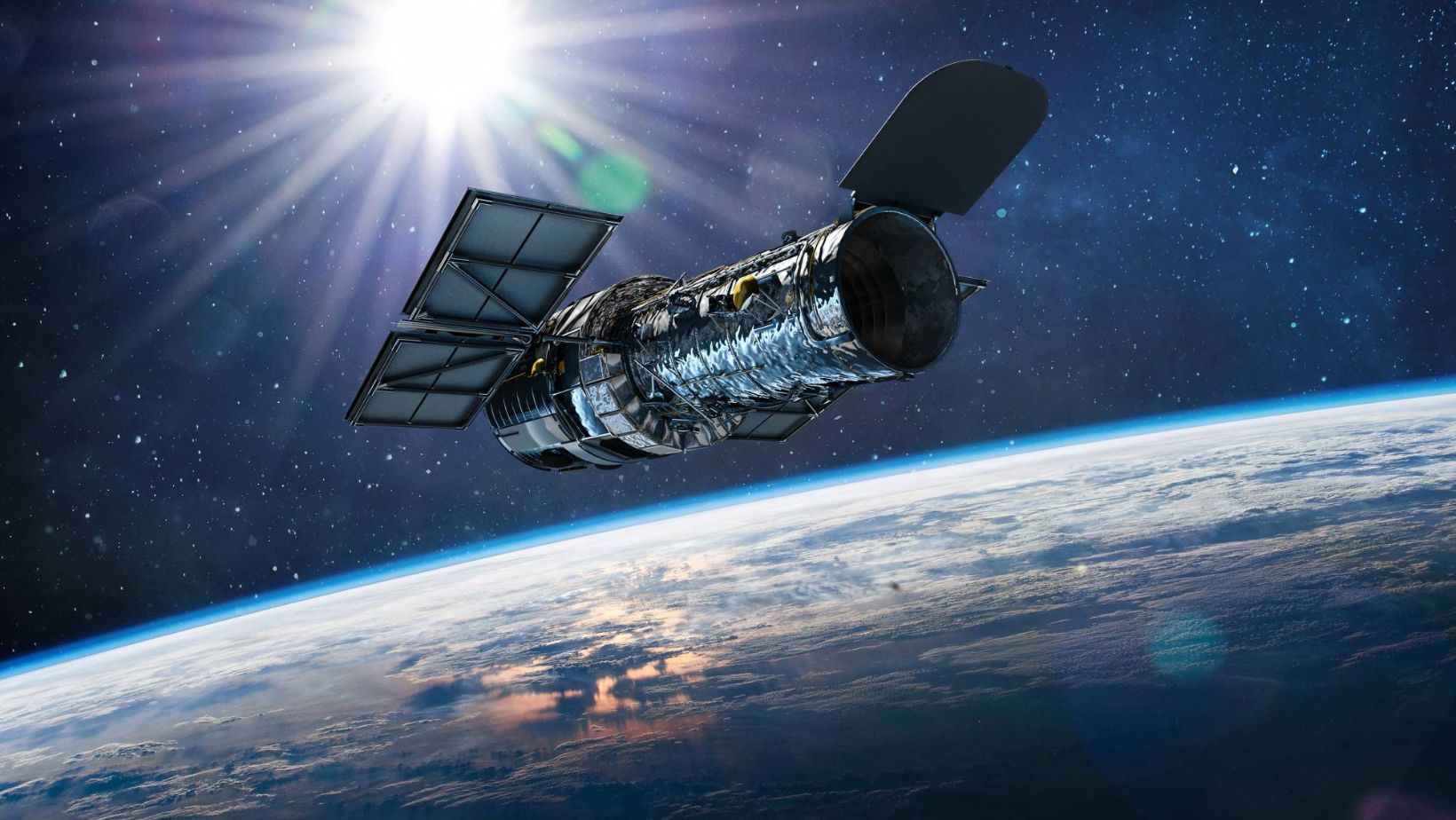The Hubble Space Telescope has changed how we see the universe. Launched in 1990, it orbits Earth, capturing images and data that were once unimaginable. From distant galaxies to stunning nebulae, Hubble has opened our eyes to the wonders of space. It’s more than just a telescope—it’s a time machine, showing us light from billions of years ago. For over three decades, Hubble has revolutionized our understanding of the cosmos, answering questions while raising new ones. Its legacy? A deeper appreciation of the universe’s beauty and mystery, forever etched in scientific history.
The Vision: Origins of the Hubble Space Telescope

The idea for the Hubble Space Telescope began in the 1940s. Astronomer Lyman Spitzer proposed placing a telescope in space to avoid Earth’s atmosphere, which distorts images. His vision was revolutionary, as it meant clearer and more detailed views of the universe. By the 1970s, NASA and the European Space Agency (ESA) teamed up to turn this idea into reality.
In 1977, Congress approved funding, officially kicking off the Hubble project. Engineers designed the telescope to orbit Earth and send back high-quality images. Development wasn’t easy, with delays and budget issues slowing progress. But the dream remained alive.
Hubble’s construction took over a decade, with scientists and engineers working on its cutting-edge instruments. Its mirror, designed to capture light from distant stars, became one of its most important features. The mission aimed to unlock cosmic mysteries and offer insights into the age of the universe. The space telescope promised to revolutionize astronomy.
By 1990, the telescope was ready for launch. Decades of vision and planning came together, setting the stage for one of history’s most important scientific tools. The Hubble Space Telescope would soon change our understanding of the cosmos forever.
Launch and Challenges: Overcoming Early Hurdles
The Hubble Space Telescope launched on April 24, 1990, aboard the Space Shuttle Discovery. It was an exciting moment, but problems quickly surfaced. The telescope’s primary mirror had a tiny flaw—just 2.2 microns off—which caused blurred images. This was a major setback, disappointing scientists and the public.
NASA didn’t give up. A plan was developed to fix the issue. In 1993, astronauts aboard the Space Shuttle Endeavour performed a historic repair mission. They installed corrective optics, essentially giving Hubble “glasses” to fix its blurry vision.
After the fix, Hubble’s performance exceeded expectations. The telescope started sending back stunning, clear images of distant galaxies, nebulae, and more. The successful repair mission not only saved the project but also boosted NASA’s reputation. It showed that space missions could overcome even the toughest challenges.
This early hurdle taught NASA valuable lessons about space engineering and problem-solving. More importantly, it allowed Hubble to fulfill its true potential. The once-blurred images transformed into sharp, breathtaking views of the cosmos. With the repair, Hubble became the iconic tool for astronomical discovery we know today.
Hubble Space Telescope Design: A Technological Marvel in Space
Hubble’s design is a technological marvel, built to function in the harsh environment of space. It is 43.5 feet long, about the size of a school bus, and orbits Earth at around 17,000 miles per hour. Its large 8-foot primary mirror is key to capturing light from distant objects, allowing Hubble to see galaxies billions of light-years away. The telescope was built to avoid the distortions caused by Earth’s atmosphere, giving it a clear view of space.
Hubble carries five main scientific instruments. These include the Wide Field Camera, which captures detailed images of galaxies and nebulae, and the Cosmic Origins Spectrograph, which analyzes the light from stars and galaxies to uncover their chemical makeup. The Space Telescope Imaging Spectrograph is crucial for studying black holes and dark matter. Hubble also has fine guidance sensors that keep it stable, ensuring pinpoint accuracy when observing celestial objects.
The telescope’s solar panels provide power, while its onboard computers control its operations. Hubble was designed with modularity, allowing astronauts to perform upgrades and repairs during servicing missions. This design has extended Hubble’s lifespan, enabling it to remain a vital tool for exploring the universe for over three decades.
Peering into the Past: Hubble Space Telescope Impact on Cosmology

Hubble has transformed our understanding of the universe by allowing scientists to peer deep into the past. Its ability to capture light from distant galaxies means it is essentially a time machine, showing us what the universe looked like billions of years ago. Hubble’s most famous image, the Hubble Deep Field, revealed thousands of galaxies, some over 13 billion light-years away. This helped scientists study the early formation of galaxies and stars.
By observing these distant objects, Hubble has provided critical data on how the universe evolved. It has shown that galaxies were smaller and more chaotic in the early universe, gradually forming the structured shapes we see today. This information supports the theory of cosmic evolution, giving scientists clues about the processes that shaped galaxies, stars, and planetary systems.
Hubble has also helped refine estimates of the universe’s age. By measuring the distance to faraway galaxies and studying the expansion rate of the universe, Hubble provided crucial evidence for the Big Bang theory. Its contributions to cosmology are invaluable, offering insights into the universe’s origins and its fate, forever changing how we view our cosmic history.
Discovering New Worlds: Hubble’s Contribution to Exoplanet Research
Hubble has played a crucial role in advancing exoplanet research. Although it wasn’t designed specifically for finding planets outside our solar system, its powerful instruments have helped astronomers discover and study them. One of Hubble’s major contributions is its ability to observe exoplanet atmospheres. By analyzing light that passes through an exoplanet’s atmosphere as it transits its star, Hubble can identify the chemical makeup of these distant worlds. Hubble Space Telescope
This technique has led to the discovery of water vapor, methane, and other gases in exoplanet atmospheres. It helps scientists understand the potential for life on other planets. Hubble has even provided data on “hot Jupiters,” gas giants that orbit very close to their stars, revealing extreme conditions on these planets. Its findings have expanded our knowledge of the diversity and complexity of exoplanets.
Hubble has also contributed to the search for habitable planets. By studying the atmospheres of rocky planets, it offers clues about their potential to support life. Hubble’s ability to gather detailed information about distant worlds has opened new doors in our search for life beyond Earth, solidifying its place as a key tool in exoplanet research.
Exploring the Mysteries of Dark Matter and Dark Energy: Hubble Space Telescope
Hubble has provided vital data in the study of dark matter and dark energy, two of the universe’s biggest mysteries. Dark matter is invisible and makes up most of the universe’s mass. While it doesn’t emit light, Hubble has helped scientists map its presence by observing how it bends light from distant galaxies through a process called gravitational lensing. This data has allowed scientists to trace dark matter’s distribution across the universe. Hubble Space Telescope
Dark energy, on the other hand, is a force driving the universe’s accelerated expansion. Hubble’s precise measurements of distant supernovae have been essential in studying this phenomenon. In 1998, Hubble data helped confirm the universe’s expansion is speeding up, a discovery that pointed to dark energy’s existence. This finding changed our understanding of the universe and led to new questions about its ultimate fate.
Hubble’s contributions have been critical in building models of how dark matter and dark energy shape the cosmos. By continuing to study distant galaxies and supernovae, Hubble provides ongoing insights into these elusive forces. Its data has laid the groundwork for future missions that will further explore these profound cosmic mysteries.
Capturing the Beauty of Space: Iconic Hubble Images
Hubble has captured some of the most breathtaking images of the universe, turning science into art. One of its most iconic images is the Pillars of Creation, showing towering columns of gas and dust in the Eagle Nebula, where new stars are born. The vivid colors and intricate details of this image have made it a symbol of the beauty and mystery of space. It’s a favorite among astronomers and space enthusiasts alike.
Another famous image is the Hubble Deep Field, a snapshot of a small region of the sky filled with thousands of galaxies. This image revealed galaxies from the early universe, some over 13 billion years old. It gave us a glimpse into the vastness of space and the diversity of galaxies that fill it. This image was a major achievement in cosmology.
Other stunning images include the glowing Crab Nebula and the swirling Whirlpool Galaxy. Hubble’s ability to capture such detail and color has provided not only valuable scientific data but also a window into the wonders of the cosmos. These iconic images inspire awe and remind us of the universe’s infinite beauty.
Hubble’s Role in Confirming the Age of the Universe: Hubble Space Telescope
Hubble played a key role in helping scientists determine the age of the universe. By observing distant galaxies and stars, Hubble measured the rate of the universe’s expansion, known as the Hubble constant. This data was crucial in calculating the time since the Big Bang. Before Hubble, estimates for the universe’s age ranged from 10 to 20 billion years, leaving a large uncertainty.
Hubble’s precise measurements of Cepheid variable stars, which serve as cosmic distance markers, helped narrow down the universe’s age. By refining the distance to these stars, scientists could better understand how fast the universe is expanding. These observations led to the widely accepted estimate that the universe is about 13.8 billion years old. This was a major breakthrough in cosmology, resolving long-standing debates.
Hubble’s work on this issue has helped answer fundamental questions about the universe’s history and evolution. By providing a clearer picture of the universe’s age, Hubble contributed to our broader understanding of cosmic timelines. This discovery has laid the foundation for future research into how the universe formed and what its future holds.
Collaborating with Future Missions: Hubble and the James Webb Space Telescope
Hubble is paving the way for future space telescopes, especially the James Webb Space Telescope (JWST). While Hubble has provided incredible insights into the universe, JWST is designed to observe in infrared wavelengths. This will allow it to see deeper into space and further back in time than ever before. Hubble’s discoveries have shaped the goals and expectations for JWST, guiding its mission.
The two telescopes will complement each other, with Hubble focusing on visible and ultraviolet light. This collaboration will enhance our understanding of the universe. For example, Hubble’s detailed observations of exoplanet atmospheres will help JWST refine its studies of these distant worlds. By combining data from both telescopes, scientists will gain a more comprehensive view of cosmic phenomena.
Hubble’s ongoing legacy is evident in the planning of future missions. The telescope has established crucial techniques for analyzing light from distant galaxies and stars. These methods will continue to be utilized and refined in JWST’s mission. As Hubble continues to operate, its findings will enrich our understanding of the universe for years to come, making it a foundational pillar in the field of astronomy.
The Future of Hubble: What’s Next for the Iconic Telescope?


Hubble continues to be a vital tool for astronomers, with its expected lifespan lasting until at least 2025 and possibly beyond. Despite being launched in 1990, its design allows for ongoing upgrades and repairs. Recent servicing missions have improved its instruments and technology, ensuring it remains at the forefront of astronomical research. Hubble is still producing groundbreaking discoveries in various fields, from exoplanet studies to cosmic evolution.
Advancements in Hubble’s capabilities are still possible, particularly in data processing and imaging techniques. With software updates and new observational strategies, Hubble can enhance its existing instruments. This means scientists can expect more detailed images and deeper insights into the universe’s mysteries. As researchers continue to analyze Hubble’s vast database, new findings may emerge from previously collected data.
Hubble will also play a crucial role in the scientific community alongside newer telescopes, like the James Webb Space Telescope. As these missions complement each other, Hubble’s established legacy will continue to guide future explorations. The telescope has set a high standard in astronomy, and its contributions will shape our understanding of the cosmos for years to come.
Conclusion: Hubble Space Telescope
Hubble’s contributions to science and humanity are truly unparalleled. It has transformed our understanding of the universe, revealing its beauty and complexity. Hubble’s groundbreaking observations have answered fundamental questions about cosmic origins and the nature of celestial bodies. Beyond its scientific achievements, Hubble has inspired generations to look up at the night sky with wonder and curiosity.
Its stunning images serve as a reminder of our place in the universe and the mysteries that still await discovery. Hubble’s legacy will continue to influence future research and exploration, making it an essential part of our journey to comprehend the cosmos.
FAQs
What makes the Hubble Space Telescope different from ground-based telescopes?
Hubble orbits Earth, allowing it to avoid atmospheric interference that can distort observations made from ground-based telescopes. This unique vantage point enables Hubble to capture clearer images and detect fainter objects in the universe. Its ability to observe in multiple wavelengths, including ultraviolet and visible light, further enhances its observational capabilities.
How does Hubble’s location affect its observations?
Hubble is positioned in low Earth orbit, about 547 kilometers (340 miles) above the planet. This location minimizes the effects of Earth’s atmosphere, such as light pollution and atmospheric distortion. Being in space allows Hubble to gather data uninterrupted by weather conditions, providing consistent and high-quality observations.
What types of objects has Hubble observed?
Hubble has observed a wide variety of cosmic objects, including galaxies, nebulae, star clusters, and exoplanets. It has provided critical insights into the life cycles of stars, the formation of galaxies, and the expansion of the universe. Its observations have also contributed to our understanding of dark matter and dark energy.
What are some of Hubble’s most significant discoveries?
Hubble has made numerous significant discoveries, including the confirmation of the accelerating expansion of the universe and the identification of exoplanet atmospheres. It has provided crucial evidence for the existence of dark matter and has helped refine measurements of the Hubble constant. The telescope has also captured iconic images that have enhanced our understanding of cosmic phenomena.
Is Hubble still being updated and maintained?
While Hubble is no longer receiving servicing missions, it has been equipped with advanced instruments and technology that allow for continued upgrades. Software updates and improvements in data processing techniques ensure that Hubble remains a valuable tool for astronomical research. Its ongoing observations continue to yield important discoveries and insights into the universe.

